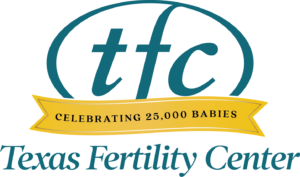
Understanding the differences IUI vs IVF. What’s the right choice for you?
You may have just received a diagnosis of of infertility or have been trying to conceive unsuccessfully for months or years. Understanding the best option for a successful pregnancy and ultimately the baby you have been wanting to bring home is an important first step in the fertility treatment journey. Dr. Munch can discusses the differences between IUI and IVF and the treatment success rates, IUI vs IVF.
It’s important, to know that only about twenty-five percent of all TFC patients require IVF to have a baby. There are many successful treatment options for couples who are starting their fertility journey.
Let’s take a look at IUI vs IVF.
What is Intrauterine insemination or IUI?
IUI is a process whereby a small volume of highly concentrated, highly motile sperm is placed into the uterine cavity on or around the day that a woman is going to ovulate. IUI is also call artificial insemination or AI. IUI and AI can be done with sperm from either a partner or a sperm donor. AT TFC IUI has a 15 to 20% chance of pregnancy per cycle
Prior to the actual insemination, the male partner collects a fresh semen specimen and takes it to the andrology laboratory. The specimen is then examined under a microscope in order to determine the concentration (the number of sperm/mL of semen), the motility (the percentage of sperm that are alive and swimming) and the morphology (the percentage of sperm that have a normal shape). Learn more about semen analysis results
The specimen is then washed with a proprietary fluid in order to isolate the sperm from the semen. The isolated fraction is then placed into a test tube on top of a column of microscopic beads, and the tube is placed into a centrifuge. During the centrifugation process, the fast moving, normal shape sperm negotiate their way through the beads down to the bottom of the tube, whereas the irregular shaped, dead, and non-motile sperm are trapped within the beads. The good sperm are then removed from the bottom of the tube with a needle and placed into a small catheter for subsequent insemination. IUI (Intrauterine Insemination).
Because an egg is normally fertilized in the fallopian tube, the head start that IUI gives the sperm increases the odds that many sperm will make it all the way to the egg. IUI is also used if there is concern about the cervix not functioning normally, or if fertility treatments without IUI have not been successful.
IUI can be performed in a natural (unmedicated) cycle or in conjunction with oral medications, such as clomiphene citrate (Clomid) and letrozole (Femara), or the injectable gonadotropins (Gonal F, Follistim, or Menopur). In a natural cycle or in a cycle of oral medication, a single IUI will typically be performed on the day of ovulation, ie. the day after the detection of the LH surge. In a gonadotropin cycle, we perform 2 IUIs; 1 on the day after the ovulation triggering medication (Ovidrel or hCG) is given, and a second the following day. This is based on research that we performed in the early 1990s, as well as many subsequent studies that confirmed our findings.
Many patients try IUI first in a natural cycle before moving on to a medicated cycle if necessary. Women who do not ovulate regularly will need to start off with medication in order to enable ovulation to occur.
Gonadotropin/IUI
Although there are many similarities between a gonadotropin/IUI cycle and a cycle of in vitro fertilization (IVF), in fact, there are many differences as well. The similarities include the use of some of the same stimulation medications as well as similarities in the ways that the cycles are monitored. The primary differences are that, in an IVF cycle, we actually remove the eggs, fertilize them in the laboratory, grow the embryos to the blastocyst stage (Day 5, 6, or 7 following fertilization), and freeze the embryos for later transfer. We can also biopsy the embryos prior to freezing them in order to make sure that they are chromosomally normal.
During an IUI (intrauterine insemination) cycle, sperm are isolated from the semen, washed in order to activate them, and then they are placed high in the uterus, close to the fallopian tube openings. This gets more sperm closer to where fertilization of the eggs actually occurs, thereby increasing the odds of fertilization.
IVF (in vitro fertilization)
During an IVF cycle, many eggs are matured with medication. Then the eggs are removed from the woman’s body by passing a needle through the top of the vagina into the ovaries under ultrasound guidance. The eggs are then fertilized in the laboratory, rather than inside the woman’s fallopian tubes. The resulting embryos are grown in the laboratory for five to seven days and the best embryos are then frozen for transfer during the following cycle. IVF is necessary when there are so few sperm that even giving them a head start with an IUI is not enough to cause fertilization to happen. IVF is also recommended when there is blockage of the tubes so egg and sperm can’t meet, when there is severe endometriosis or pelvic adhesions, in cases of advanced maternal age or diminished ovarian reserve, or if genetic testing of embryos is necessary prior to pregnancy in order to prevent the transmission of certain genetic diseases. Finally, IVF is an excellent option if other fertility treatments are not successful or those treatments are thought to have a low likelihood of success.
Only 25-30% of the patients who come to Texas Fertility Center-San Antonio end up needing IVF. A similar percentage uses IUI to achieve pregnancy. An appointment with Dr. Munch or Dr. Hudson can determine which procedure is best for you.



